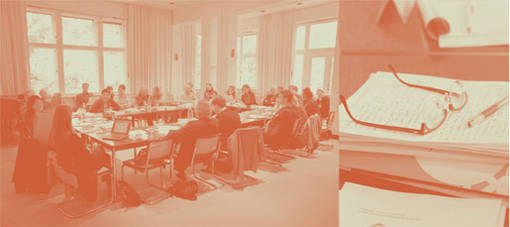The breaching of the US Capitol Building on 6 January 2021 and broadly publicised reactions to it make it clearer than ever: within the newly mediated spheres of American political extremism, we need an incremental more than imminent theory of incitement.
One reason for this is not only because an incremental approach to incitement can illustrate how the conditions for 6 January were set in motion long before the events of the day, but also because analysing incitement’s incrementalism, as well as its public disavowals, can teach us something about a particular vulnerability to fascism in America. In fact, I think that embedded in both recent and historical deliberations on incitement in American public culture is a key to understanding how fascism is likely to grow in America and why it may be difficult to see until it reaches a tipping point.
Deliberations on incitement in American public culture is a key to understanding how fascism is likely to grow in America and why it may be difficult to see until it reaches a tipping point.
As Sarah Churchwell reminds us, “all fascism is indigenous.” It is less imported than homegrown. This is what makes it hard to discern, as the localness of American fascism—its racism, its libertarianism, its entertainment value—can render it categorically fuzzy, resistant to “taxonomies” that seek to identify a “fascist minimum” through comparison elsewhere. While scholars may wonder how to measure if we are truly in it, the moment of incitement’s realisation seems to sound an alarm. Thus, investigating the incremental nature of incitement may also make visible the slow growth of American fascism by helping us identify its particular themes, its forms of mediation, and the mechanisms of its acceleration. Looking at recent disavowals and historical discussions of incitement is a useful way to do this.
Individualising collective threats
One key theme that dominated disavowals of Trump’s incitement on 6 January was that of individual responsibility. This is represented in certain congressmembers’ analyses of the incursion on the Capitol that argue that “we are responsible for our own actions, period,” and that downplay the “linkage” between one person’s words and another’s action. These radically individualizing interpretations of a collective problem renders an imminent fascism nearly impossible to identify given its grounding in a resolutely homegrown national narrative. This hypernormalisation of individuality, independence, and personal autonomy ironically makes for a powerful American nationalism. As a consequence, those stories most often celebrated about individual freedom and fetishised in a sacred First Amendment also obscure the processes of fascism’s incremental socialisation.
Radically individualizing interpretations of a collective problem renders an imminent fascism nearly impossible to identify.
Consequently, in response to these conditions of ideological irreverence toward socialisation, incitement can become overcharged with individual agency at precisely the time it is called to serve as a legal litmus test for key concerns regarding the social production of American fascism, demonstrated in the powerful but also temporally narrow attribution of blame in the attack on the Capitol and the legitimacy of the single article of Trump’s second impeachment: “incitement of insurrection.”
Demonstrated in both conservatives’ denial of and liberals’ appeal to incitement’s immediacy is the impoverishment of social theory in our public discourses. And this has troubling consequences for clarifying how incitement slowly activates through extreme nativist rhetoric, as well as for leveraging incitement to legally address it. For, if proclamations of imminent incitement compress insurrection to a moment, they also obscure the cumulative conditions that empower it—that make incitement incrementally event-ful. As anthropology operates within this terrain of incremental consequence, it can illustrate how incitement is primed with potential over time.
If proclamations of imminent incitement compress insurrection to a moment, they also obscure the cumulative conditions that empower it.
As Heywood and Spanu advise us, a nationalism turned fascist is not “the spontaneous results of a sudden transformation in specific people, but steps in an open-ended process.” One way anthropologists can trace this process, then, is by mapping the affective potential of incitement through a heterogenous network of its incendiary elements—historical, linguistic, material, mediated, ideological, racial, reiterative, economic, and local. We might describe this as “affect-focused thick description.” Or, in a word, context.
At a time when “incitement” speaks for the social in the legal assessment of dangerous speech, context is crucial; and thus, so is the anthropological perspective. But perhaps like American anthropology itself since Margaret Mead, context’s importance in public discourse has been undermined by its idiosyncratic applications. Consider the history of context’s relation to incitement.
Context’s importance in public discourse has been undermined by its idiosyncratic applications.
Historicising American incitement
A key legal precedent for centring context in incitement cases was established in 1969 when the US Supreme Court deliberated in Brandenburg vs Ohio on whether Ku Klux Klan leader Clarence Brandenburg had publicly advocated violence. In a televised appeal to take revenge against the suppression of whites, Brandenburg stood by a burning cross and armed Klan members while publicising their march to Congress. Although he was convicted for advocating violence in a jury trial and the Ohio Supreme Court affirmed the decision, The US Supreme Court overturned the verdict. As Wilson and Kiper (2020, 70–71) explain in a momentous work of scholarship, the Court’s ruling set a new test for exemption to First Amendment protections by limiting it to cases where “advocacy is directed to inciting or producing imminent lawless action and is likely to incite or produce such action.” By this argument, “Brandenburg’s innovation was to add two contextual conditions—imminence and likelihood—to the long-established element of criminal advocacy.” However, by providing “no guidance on any of the three elements of the text,” the Court had effectively established the importance of a contextual approach without offering any means to evaluate context beyond an idiosyncratic interpretation. Consequently, one can see how the personal responsibility-approach to incitement outlined in congressmembers’ statements above represents a poor theory that, evacuated of sociality, history, and mediation, makes incitement nearly impossible to convict.

That said, there may be good reasons for setting an extremely high bar for convicting cases of incitement. While too narrow a definition of incitement renders it inept, too broad a definition weaponises it in the hands of authoritarian states, as seen recently in Uganda, Russia, and Myanmar. Applied to the US, there is reason to fear that the new administration’s legitimisation of an imminent theory of incitement will come to harm those in the future it aims to protect in the present.
The strong approach
If states are willing to take such a hard but mercurial approach to operationalising incitement, should social scientists from all its allied subfields be willing to offer an equally hard set of criteria for delimiting it? Richard Wilson and Jordan Kiper argue yes. They integrate studies on the relationship between the advocacy and execution of violence from psychology, sociology, political science, and anthropology to “determine whether lawless action is imminent and likely to result from inciting speech” (2020, 120). They produce from this what they call “The Incitement Matrix” (Figure 1).
In the Incitement Matrix, the more criteria the offense meets, the higher the risk for violence. Although Wilson and Kiper developed it well before the incursion of the US Capitol, it reads as if it were custom ordered for it: it’s hard to deny Trump a ten-for-ten here. The reason for this highlights the feedback loops connecting fascism to incitement. Fascism’s increasingly exclusionary and vitriolic rhetoric correlates with and naturalises violence against those perceived as threats to a victimised in-group; in turn, incitement’s potency increases the likelihood that calls for action will be, in fact, acted upon. Crucially, as Wilson and Kiper explain (2020, 95), when certain patterns of call-and-response are left unidentified, as was the case in the wake of Brandenburg, then judges and juries rely on “models of speech that are metaphorical and inaccurate.” People essentially trust a gut that is socialised in America to feel that individual action cannot be easily enacted by anything other than individuals, ignoring a great deal of anthropological evidence to the contrary. (Much of William Mazzarella’s important work, for example, is explicitly dedicated to illustrating this fundamental social fact of affect.)
People feel that individual action cannot be easily enacted by anything other than individuals, ignoring a great deal of anthropological evidence to the contrary.
A weaker complement
This Matrix approach to incitement meets the action of strong states with strong theory. However, given incitement’s affective dimensions, and affect’s slippery nature, adding to the strong approach a “weaker” compliment can help draw out both incitement’s and fascism’s incremental nature. Affect theorist Kathleen Stewart has long advocated for this, arguing with reference to Eve Sedgwick (1997) that while strong theory acts in a rather paranoid mode, always seeking to catch the world in an obvious lie in less-than obvious circumstances, weak theory is productively slower, broader, and more curious. Exercised ethnographically, this approach widens attention to things like the “media in which things take place, the subtle or brutal in what’s happening, the idiosyncratic or rigidly fundamentalist proclivities of this and that” (Stewart 2018, 17).
Strong theory acts in a rather paranoid mode.
Anthropologists that add weak observations to strong theories might look not only at hard patterns of fascism but rather at the incremental actions that—in a subtle but important distinction—pattern behaviour through repetition and accommodation: the repeated receiving and reciprocating of alarmist Tweets; the effects of bouncing between extremist virtual chat rooms and real-life rallies where those chats reify in bodies (as Dominic Boyer [2021] notes, “Fascism is always virtual until it isn’t); and all the ways that habituated actions increase a body’s potential to act—even in the face of contrary “knowledge,” which, as Lisa Fazio’s (2015) brilliant title to a work of experimental psychology explains, “Does Not Protect Against Illusory Truth.”
The purpose of adding ethnographic context to incitement is not only to catalogue criteria for but also to document the intensification of its imminence. By doing so, anthropology is better equipped to speak for the social in public discourse in several ways: by identifying the recurrent nativist symbols that incrementally prime incitement through increasingly fascist rhetoric; by demonstrating how those symbols intensify affect through social media posts and platforms; and most of all by expanding incitement temporally, documenting its activation, and packing incitement with social context in order to better unpack America’s distinctive vulnerabilities to fascism.
Podcast
References
Boyer, Dominic. 2021. “Digital Fascism.” Hot Spots, Fieldsights, April 15.
Fazio, Lisa K., Nadia M. Brashier, B. Keith Payne, and Elizabeth J. Marsh. 2015. “Knowledge Does Not Protect against Illusory Truth.” Journal of Experimental Psychology: General 144 (5):993–1002.
Sedgwick, Eve Kosofsky. 1997. “Paranoid Reading and Reparative Reading, or, You’re So Paranoid, You Probably Think This Introduction Is About You.” In Novel Gazing: Queer Readings in Fiction, edited by Eve Kosofsky Sedgwick, 1–40. Durham, NC: Duke University Press.
Stewart, Kathleen. 2018. “Worldly Thinking, Comment to Sasha Newell’s The Affectiveness of Symbols: Materiality, Magicality, and the Limits of the Antisemiotic Turn.” Current Anthropology 59 (1):16–18.
Wilson, Richard A., and Jordan Kiper. 2020. “Incitement in an Era of Populism: Updating Brandenburg After Charlottesville.” University of Pennsylvania Journal of Law & Public Affairs 5, no. 2: 56–121.
Featured picture by Brendon Spring, courtesy of Pexels.com





